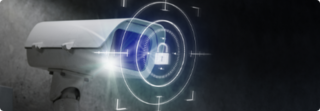
How to Collect Videos Evidence from CCTV System
If you have a CCTV system installed in your business or property, you know how important it
is to have clear and reliable video footage. CCTV evidence can be crucial in providing
information to the authorities in case of an incident. It can be important to quickly find
the security footage you need, download it to your device, or make it available to police.
From learning how to get access to the footage to understanding the different file formats,
there are a few things you need to know about CCTV footage downloads. This is the process
for collecting video evidence from CCTV systems so you can be prepared in case of an
incident.
1. Determine the Timeframe of the Footage
Before you start collecting footage from your CCTV system, determine when the event occurred
that you’re trying to see. If you’re looking to collect CCTV evidence of a crime, identify a
suspect, or see a reply of an event on your property, an idea of the date and hour the event
occurred can help you find it more quickly.
Security camera systems with smart recording and playback capabilities can make this easier
by flagging security events on your footage, like when a person enters the frame.
2. Learn How to View Your Live or Recorded Footage Remotely
Modern CCTV systems allow you to see your camera footage right from your smartphone, tablet,
or computer. This means that you can access your footage remotely from anywhere worldwide as
long as you have an internet connection. To view your CCTV evidence remotely, you will need
to login into your CCTV system using a web browser, PC software, or mobile app.
You can back up the footage to your computer, an external hard drive, or a USB drive. You
can back it up online with platforms like Dropbox or Google Drive, or you can send video
clips as an email attachment.
3. Download and Save the Footage
Once you have determined the footage you want, you can easily download that CCTV footage
from your DVR or NVR.
The exact process may be different based on your video recorder and the platform you’re
using to connect with it, but look for options for file backup and downloads.
There are several ways you can save CCTV evidence. You can back up the footage to your
computer, an external hard drive, or a USB drive. You can back it up online with platforms
like Dropbox or Google Drive, or you can send video clips as an email attachment.
4. Convert the Footage into a Usable Format
Once you have collected the CCTV evidence, you need to convert it into a usable format. The
most common video formats are AVI, MOV, and MP4. If you are not sure which format to choose,
we recommend converting the footage into AVI or MP4. These formats are compatible with most
video editing software and media players.
Also, ensure that the CCTV footage download is properly labeled so you can easily find it
when needed. We recommend including the footage's date, time, and location in the file name.
Blogs you like to read

The Best Remote Security Camera
One of the best features of modern security cameras is that you can view live or recorded footage right from your smartphone, computer, or tablet. ….10 Jan, 2023

Smart Security Camera Features
Smart security cameras are an excellent way to effectively and conveniently keep your property safe. Smart features make security camera systems…..10 Jan, 2023

How to Collect Videos Evidence from CCTV System
Security cameras and systems are only helpful if they’re compatible with the devices you use to monitor them.10 Jan, 2023
